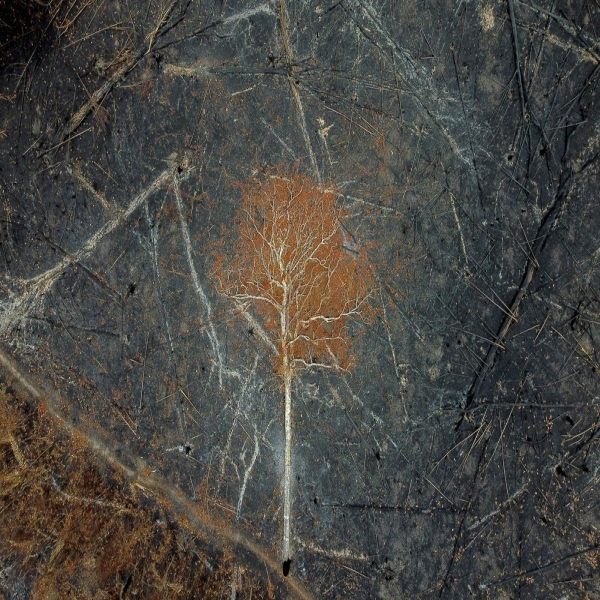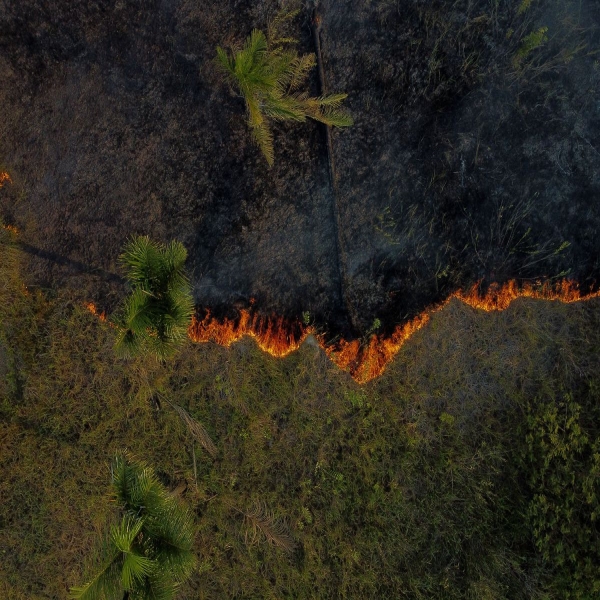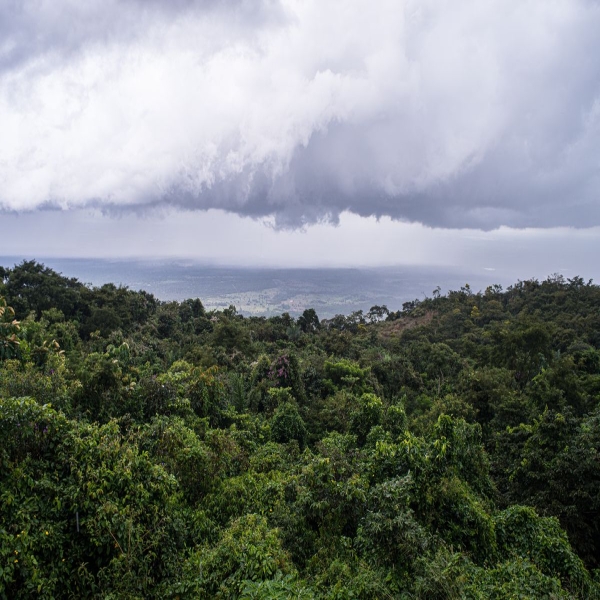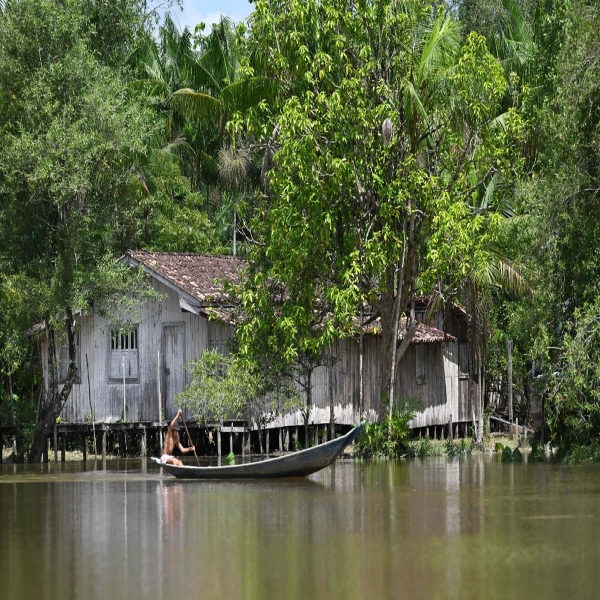Human survival depends on this iconic ecosystem, and only one thing will save it.

Benji Jones is a senior environmental reporter at Vox, covering biodiversity loss and climate change. Before joining Vox, he was a senior energy reporter at Insider. Benji previously worked as a wildlife researcher.
No matter where you live on this planet, you need the Amazon rainforest.
The largest tropical forest on Earth, the Amazon stores more than 120 billion tons of carbon, which — if unleashed into the atmosphere — would supercharge climate change. It’s also home to a mind-boggling number of plant and animal species, many of which have served as the basis for medicines to fight ailments like cancer and hypertension.
That’s what makes this so alarming: The Amazon forest is dying. Decades of deforestation, wildfires, and rising temperatures are pushing the forest toward a critical threshold of destruction beyond which large parts of the rainforest will dry out and turn into a savanna, releasing massive quantities of carbon in the process.

Scientists have warned of such a tipping point for more than a decade, but new research adds a compelling line of evidence to this doomsday scenario. Most alarmingly, the study, published last week in the journal Science Advances, finds signals in real-world data that a tipping point may be approaching, due to a drop in rainfall, if high levels of deforestation continue.
“The current system is approaching a critical transition,” the study’s lead author, Nils Bochow, a researcher at the Arctic University of Norway, told Vox, adding that he found the results a “bit shocking.”
This dire transition might yet be avoidable, Bochow said, and it’s largely in our control. But time is running out.
Why the Amazon is approaching a tipping point
In climate science, the term “tipping point” typically refers to a threshold of loss in some natural system beyond which a feedback loop is triggered. That system then “tips” into an entirely different state. Often this process is both caused by and fuels warming (or other climate impacts).
A common example of a tipping point is the melting of Greenland’s enormous ice sheet. As global temperatures rise, the surface of the ice cap melts, revealing darker ice beneath it. In turn, darker ice absorbs more heat and melts faster. Melting also lowers the height of the ice sheet, so more of it is at a lower elevation, where it’s warmer and melts faster. The tipping point is the threshold beyond which accelerated melting is inevitable, leading to an extraordinary amount of sea level rise.
A tipping point in the Amazon is a bit more complicated, in part because this system is alive and its health is determined by a large number of environmental variables. When scientists talk about a tipping point in this ecosystem, they’re referring to the threshold beyond which parts of the forest will start to turn into an entirely different environment, one that looks nothing like the Amazon forest.
On the ice sheet, the tipping point is fueled by heat and melting. In the forest, it has to do with rainfall, or the lack thereof. Critically, much of the water in the Amazon is recycled by trees, which you can think of as living water pumps. Their roots absorb water from rain, groundwater, and rivers, and their leaves spit it back out as vapor through tiny pores on their surfaces. That vapor condenses into clouds, and those clouds then release more rain.
But as miners and cattle ranchers continue to raze the forest, there are fewer and fewer trees to pump water back into the air. That results in less rainfall, which dehydrates and kills trees, which results (again) in less rainfall. The fear is that this cycle will repeat itself until large chunks of the forest dry out. Plus, the more trees that die, the more carbon that is emitted, fueling warming that makes tree-killing wildfires more severe.
Reaching a tipping point in the Amazon would mean kick-starting this feedback cycle until large swaths of the forest are transformed into a savanna, a much drier ecosystem that’s a mix of grass and trees.
A big question now is about the threshold of deforestation that would trigger this process, and on what timeframe. That’s where studies like this one come in.
A “shocking” warning sign
Humans and natural fires have already cleared nearly 20 percent of the Amazon rainforest. And there are already signs that this may be drying it out. In the last four decades, the region’s dry season has become longer and droughts have become more severe. Does that mean the forest is nearing the critical threshold described above?
To help address this question, Bochow and his co-author built a complex computer model showing how further deforestation would affect the region. Unlike past studies, their model accounts for a key interaction between the Amazon forest and the South American monsoon — a wind system that brings moisture from the Atlantic Ocean to the Amazon, where it condenses and falls as rain.

This interaction, it turns out, is critical to understanding a tipping point scenario because it impacts the amount of rain that falls in the forest.
The explanation of why is a bit wonky, but here’s the gist: As vapor is released into the air by leaves in the Amazon, it condenses to form rain. This condensation process not only produces rain but also releases heat (because physics), causing the air above the forest canopy to warm. Critically, the nearby Atlantic Ocean is cooler, and the difference in temperature between the ocean and the forest is part of what drives the monsoon, i.e., the wet season rains (because, again, physics).
Put more simply: Lots of trees help keep the monsoon rains stable. The forest can depend on these rains for even more water.
The new study tries to understand what happens on the flip side, when there are fewer trees in the Amazon. The model found that if deforestation paces ahead, there will be a gradual decline in the amount of moisture in the atmosphere coming from the Atlantic Ocean, and thus less rainfall in the Amazon. Again, that’s what drives the so-called savannization of the forest.
Then, once deforestation reaches a certain threshold — which the authors don’t define — rainfall could decline by as much as 50 percent over the course of several years or perhaps decades, the model shows. That threshold is the tipping point. (Past studies suggest the threshold might be between 20 and 40 percent of the Amazon deforested.)

While the authors didn’t lay out the exact threshold for deforestation, they did look for signs that the tipping point might be near. The model predicted that, as deforestation approaches the critical threshold, soil moisture declines and there’s a delayed start to the wet season. The researchers then compared these model results to real-world data — and found those same signals.
The dry season is longer. The soil has less moisture. The researchers also identified statistical signals that the system is destabilizing.
“It was a little bit shocking to see the model is so similar to the results we see in the observational data,” Bochow said. “The current system is approaching a critical transition.”
That doesn’t mean the forest will reach the tipping point tomorrow, in a year, or even in a decade. The Amazon appears to be approaching the threshold faster than, say, the Greenland ice sheet, but the timeline is still not at all clear.
Plus, there are a lot of unknowns, such as how exactly warming and rising carbon dioxide will worsen — or perhaps even buffer — the impact of less rainfall. Those variables were not factored into the study. (Trees, like all plants, need carbon dioxide to grow, and so more of it in the air helps fertilize them.)
If nothing else, the study amplifies an already-loud warning call that this iconic forest is fundamentally at risk, and its days may be limited. “It’s providing more evidence that the Amazon is losing resilience,” said Chris Boulton, a researcher at the University of Exeter who is not affiliated with the research.
If there’s any good news here, it’s that this problem is made by humans, and so it can be corrected by us, too. Bochow put the solution plainly: “Stopping deforestation now is the only way.”
Source: vox.com






